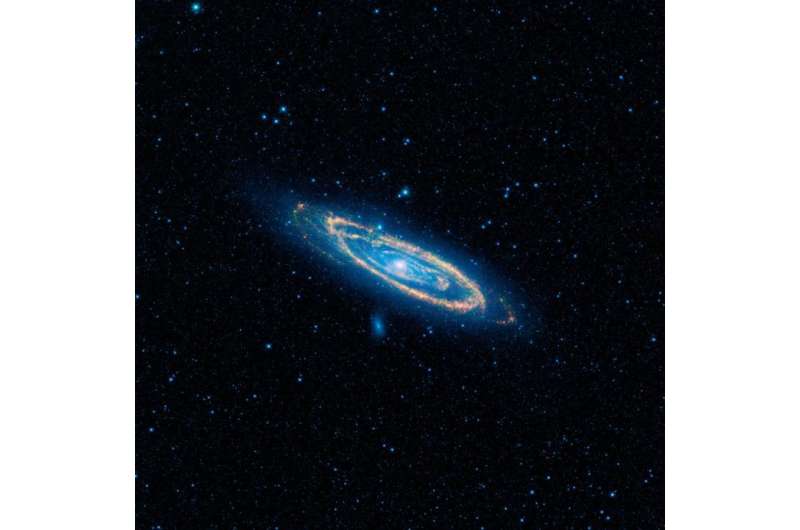April 20, 2015 report
Best of Last Week – Dark matter maybe not so dark, chance of asteroid strike and statins increasing diabetes risk

(Phys.org)—It was an interesting week for physics as a multinational team of researchers found potential signs of "interacting" dark matter that suggested the mysterious material is not completely dark after all—observations of a group of four galaxies colliding indicated one dark matter clump that appeared to be lagging behind the others, suggesting something other than gravity was at work. In other news from space, astronomers (and many others) wondered if asteroid 2012 TC4 will hit the Earth in October 2017—it came close enough back in 2012 to make a strike a possibility the next time around.
Also disappointingly, a team at NASA's WISE orbiting observatory conducted a search for advanced civilizations beyond Earth and found nothing obvious in 100,000 galaxies. There was also an update by the researchers trying to figure out what the two bright spots are on "Dwarf planet" Ceres—they report it is a giant mystery—the two spots were originally assumed to be similar, but new evidence from NASA's Dawn space probe showed one is colder than the surrounding surface, but the other is not. They are also wondering why there are so few craters on the surface.
In other news, a team of scientists developed a mesh that captures oil—but lets water through—a possible new tool for cleaning up oil spills in the future. Another team of researchers announced they had created a world-record electric motor for aircraft—it's small, yet delivers a reported five times more power than comparable drive systems. Also a team in Senegal reported that they had observed chimps fashioning spears for hunting—the first observation of a species other than man using tools to hunt large animals. A team of researchers at the University of California also reported that brain development suffers from lack of fish oil fatty acids—in developing frogs. There was also news from the team working on The Green Brain Project—they used a bee brain simulation to pilot a drone.
And finally, for those people who take statins to reduce their chances of heart attack or stroke, a new study conducted in Finland has found that the drugs also increase the risk of developing diabetes by 46%—patients will apparently have to decide for themselves whether they are worth the risk.
© 2015 Phys.org





















